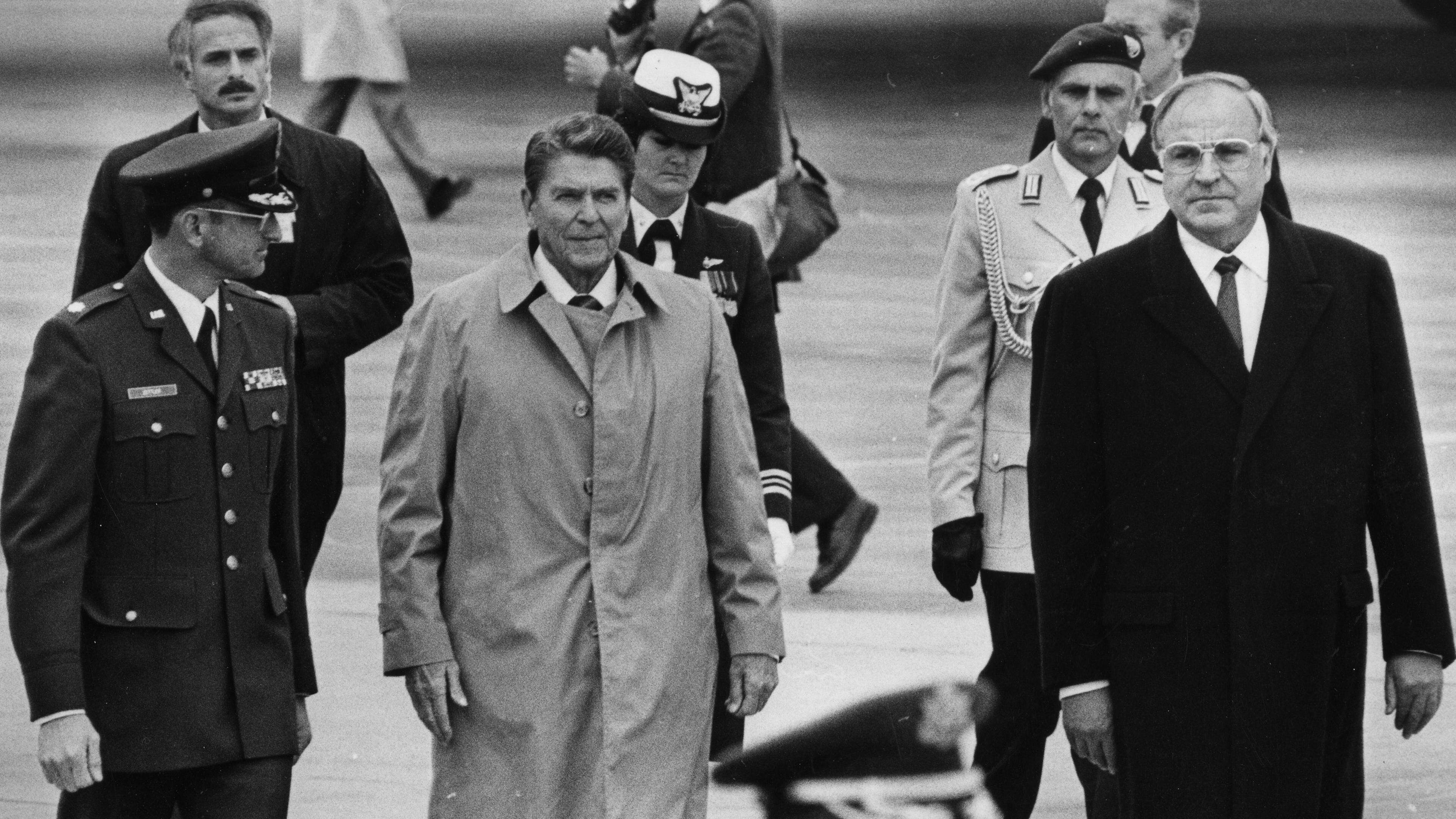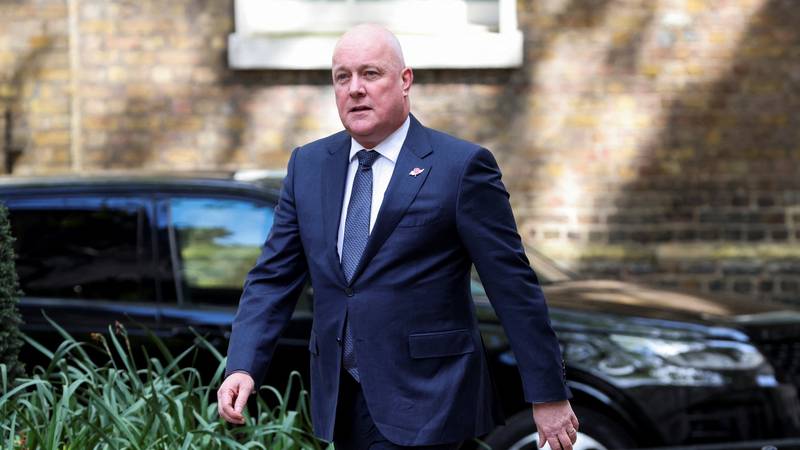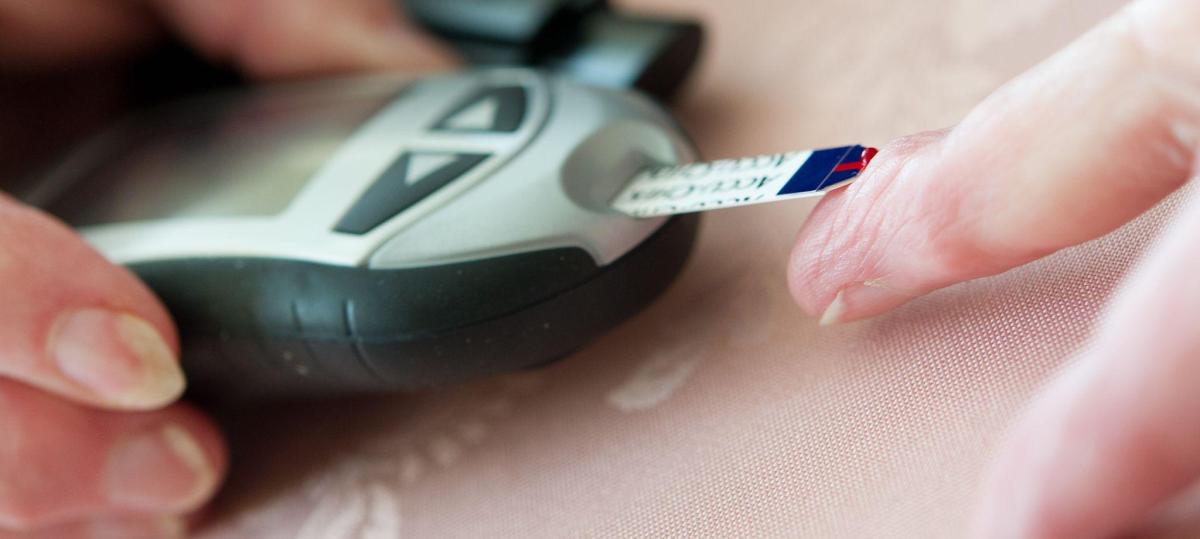When Helmut Kohl and Ronald Reagan drove to Bitburg

It should be a « pilgrimage of reconciliation » on May 9, 1985: The then German Chancellor Helmut Kohl and the then US President Ronald Reagan were traveling in Germany 40 years ago, on May 5, 1985. Reagan had traveled to a G7 summit in Bonn. The reason for the personal meeting with Kohl on May 5th was the 40th anniversary of the unconditional surrender of the Wehrmacht on May 8, 1945.
When the gesture of reconciliation between the former warrior parties, the German government’s employees commissioned with the protocol were intended, Reagan and Kohl were supposed to settle wreaths in a military cemetery – and there should also be senior generals from US Army and Bundeswehr, who had already participated in the Second World War. Kohl had made this proposal during a visit to the White House in November 1984. And Reagan wanted to do the favor because he had spoken out for the stationing of American Pershing II rockets in West Germany.
It would have been a pretty good script for the symbol of reconciliation, a gesture of commemoration, a step into a common future for Germany and the USA. But the good resolution failed at the selected place. The military cemetery Bitburg-Kolmeshöhe is logistically and symbolic of the U.S. Airbase Bitburg and the still active in Spangdahlem for a visit to the US state. But he has a crucial catch: there is not a single US soldier-but in addition to soldiers from the « regular » Wehrmacht, a total of 59 members of the Waffen-SS.
The visit took just under ten minutes. Photo: Lé Sibenaler
And that was exactly the problem: While the Wehrmacht was still largely regarded as a military army, whose members were unable to resist commands and were historically reprehensible but « clean » war, the Waffen-SS was actively involved as an organization on the Holocaust and numerous associated war crimes and crimes against humanity.
For German critics, a visit to Bitburg was related to Kohl’s historical policy, the attempts to normalize Germany’s role in World War II and thus to “at eye level” with the western -pawns – after all, there was now a cold war and the common enemy was now in the east behind the Iron Curtain.
But Reagan also got massive headwind in the United States: the visit program was published on April 11, at that time it was not officially known that there were no US soldiers in the cemetery. American journalists researched the Kolmeshöhe, learned from the weapons-SS graves and even questioned the then Mayor of Bitburg, Theo Hallet. And his words did not necessarily contribute to reassuring: SS people were probably at all German military cemeteries.
Equivalent to perpetrators and victims
Reagan also pours into the fire with an, perhaps carelessly, perhaps well-considered statement: the SS people were « the bad guys », but there were 2,000 graves in the cemetery and many of those who lie there were just 18 and compulsorily obliged to « fulfill the hated wishes of the Nazis ». These young people « were just as safe as the victims in the concentration camps. » An equation that could not remain unexpected.
The SS’s honorary signs on the gravestones had been removed. Photo: Lé Sibenaler
The outcry in the United States was clearly audible: politicians from both major parties, Jewish communities, and protested ranked military. The Jewish writer Elie Wieselwho had survived the Buchenwald and Auschwitz concentration camp, spoke personally to Reagan: « I ask you to find another place. This place, Mr. President, is not her place. Your place is with the victims of the SS! » Politicians from Great Britain, Belgium and the Netherlands also wrote Reagan and demanded a cancellation. The House of Representatives even decided with a clear majority of 390 to 26 that Reagan should be asked to do without a visit to Bitburg. However, the decision was not binding for the president, so Reagan did not follow him either.
This place, Mr. President, is not her place. Your place is with the victims of the SS!
Elie Wiesel
Shoah survivor
Damage limitation in Bergen-Belsen
In order to alleviate the controversy, the travel planners wrote to the two heads of state for the morning a visit to the Bergen-Belsen concentration camp memorial in Lower Saxony. Wreaths are also laid down here. Reagan holds a « never again » speech, which the « Time Magazine » later refers as « successful exercise both in the art of mourning and political damage limitation ». Finally, he quotes from the diary of Anne Frank, which lies in one of the mass graves in Bergen-Belsen. But all of this does not change anything: the damage had already happened with the publication of the visit program.
And by the way, through a weather -related planning error: The US magazine « Politico » writes in an article from 2018That Reagan chief Michael Deaver found the Bitburg cemetery in February 1985 as suitable for a preparatory visit – because he could not see the graves of the Waffen -SS under a thick snow cover.
Only with the liberation of Buchenwald did the world look into the interior of the evil heart
Prominent protesters: Michael Moore and Beate Klarsfeld
Despite the clear criticism, both heads of government hold on to Bitburg. 2,000 police officers secure the route to the cemetery. Nevertheless, protesters line the street and express their displeasure on posters. One of them is Michael Moore, who will later be famous as a documentary filmmaker, he traveled specifically with a Jewish friend. On her poster it says « We came from Michigan to remember: these people killed my family. »
It is not only protested in Bitburg: In the morning in Bergen-Belsen, the « Fils et Filles des Déportés Juifs de France », led by Beate Klarsfelddemonstrates. « Bitburg is not your Place, Mr. President », a transparently quotes the appeal from Elie Wiesel. And even in front of the US message in Tel Aviv, demonstrators gather: « Mr. Reagan, Have You No Shame » is on a poster.
Beate Klarsfeld: Famous in one fell swoop
The visit itself only takes ten minutes, there are no speeches, only the leaning is completed – to the trumpet sounds from the « good comrade ». And, supposedly, it was not so agreed: German general Johannes Steinhoff shares his hand with his counterpart Matthew Ridgway. The state visit « overcame the ‘Bitburg hurdle' » later rhymed the « review »But also complains: « The unfortunate choice of a cemetery on which members of the Waffen-SS are also buried had torn old wounds. » The rapporteurs also tried the attempt to explain: Kohl may have been under pressure because he did not take part in the celebrations on the 40th anniversary of landing in Normandy in June 1984 – or that he might have endangered the G7 summit with a cancellation of the Bitburg visit.
Kohl will later write in his memoirs that many of the weapons SS have been « bloody jung » and « had no chance (had) to avoid the order command for the Waffen-SS. » 32 of those buried in Bitburg were younger than 25 years. That is true – however, there was also an officer (who was also only 23 years old when he died) and nine non -commissioned officers.
A change of perspective
A visit to Bitburg is a central part of the question of how Germany can deal with the memory of its Nazi past. Afterwards, political scientist Claus Leggewie speaks of « de-dramatization » and « reconciliation symmetry », of a departure from the « demuts and penitent pose (like Willy Brandts Knief in Warsaw in 1970) ».
« A day of liberation »: Weizsäcker’s legendary speech on May 8th
Shortly after Reagan’s visit, Federal President Richard von Weizsäcker will give his famous speech on May 8, 1985 – not to interpret as a « answer to Bitburg », but to interpret as such: « May 8th was a day of liberation » – not that of a defeat. And again about ten years later, the « Wehrmacht exhibitions » of the Hamburg Insituts for social research will ensure a further change of perspective.
Photos:
Elke Wetzig / Wikimedia Commons / CC BY-SA 4.0
Sjakellia full bridle / wikimedia commons / CC0 1.0 Universal








